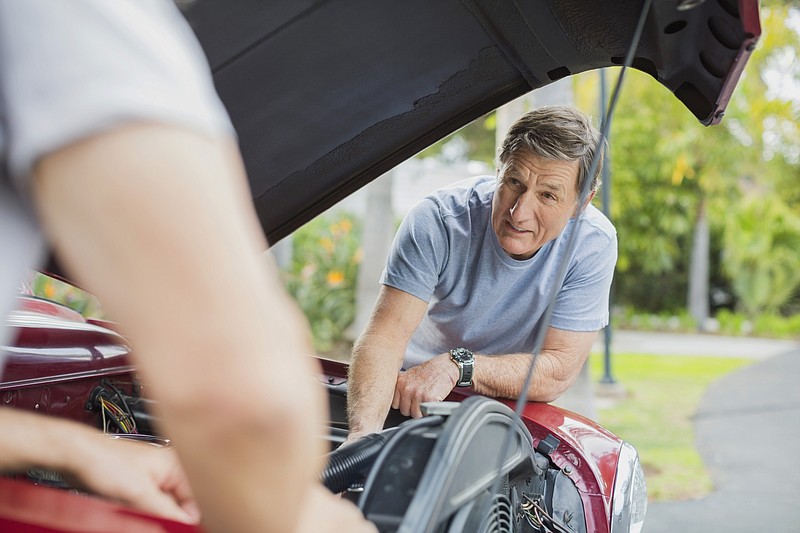Q: I'm hoping you can help me. The floor beneath the dashboard of my 2008 GMC Sierra 1500 is wet. Looking closely, I can see orange fluid dripping down from the parts above. Any ideas on how to fix this? It's becoming a slimy mess.
- Frank L.
A: Ugh. It sure sounds like your Sierra is suffering from a failed or leaking heater core.
This is a finned textbook-sized radiator-like device made of aluminum. It has two hose connections and is buried deep under the instrument panel within the heating, ventilation and air conditioning (HVAC) module. Renewing the heater core is a miserable pro-level job requiring around five to six hours of labor. The job involves disassembly and reassembly plus discharging and refilling the air conditioning system refrigerant. I wouldn't attempt this at home unless you have considerable experience.
Adding a stop-leak product might bring temporary relief, but heater core leaks don't respond well to sealers. Temporarily rerouting or blocking the heater hoses under the hood can be a mild-season time-buyer if repairs can't be done promptly. You'll find cleaning up the mess is difficult, with the antifreeze-water mix tough to extract from the carpet and insulation padding underneath. It evaporates incredibly slowly.
As part of the repair process, it's a good idea to check for electrolysis, which might have caused the heater core failure and could attack the new one. With the radiator full, a voltmeter's red lead is placed in the coolant, and the black lead is connected to the battery negative terminal. If the meter reads 0.3 volts or higher, electrolysis is present and
should be addressed.
Q: How often should you look under a car's hood? I'm talking oil levels and making sure all is well. Is a check with each oil change sufficient?
- Val T.
A: I try to examine the family fleet about once per month, checking oil and coolant, taking a quick look at the serpentine belt, peeking beneath for fluid leakage and checking tire pressure. Other fluid checks and inspections typically wait for the semi-annual oil-filter change or whenever the oil life reminder hits about 30 percent remaining. Performing fairly consistent checks allows one to learn average oil consumption and tire air-loss, allowing a more relaxed schedule for vehicles that remain full.
Living in the country brings additional maintenance, such as leaf and debris removal and looking for signs of rodent activity. Many newer vehicles have gone green by employing soy-based wire insulation and connectors, which are attractive to critters. Repair shops are seeing a big increase in wiring harness damage, which can be very costly to fix. Sprays and hot-pepper tape wrap
can help.
ABOUT THE WRITER
Brad Bergholdt is an automotive technology instructor at Evergreen Valley College in San Jose, Calif. Readers may send him email at [email protected]; he cannot make personal replies.

